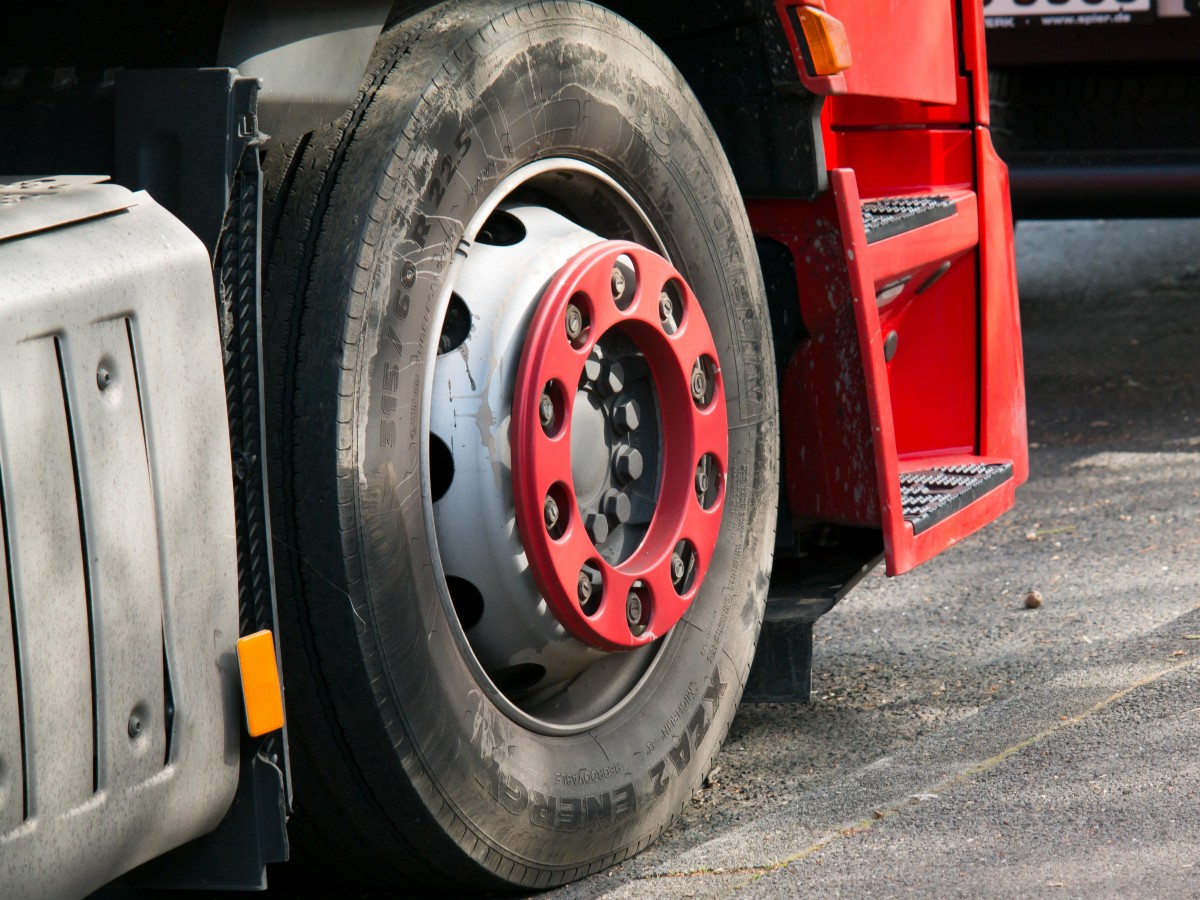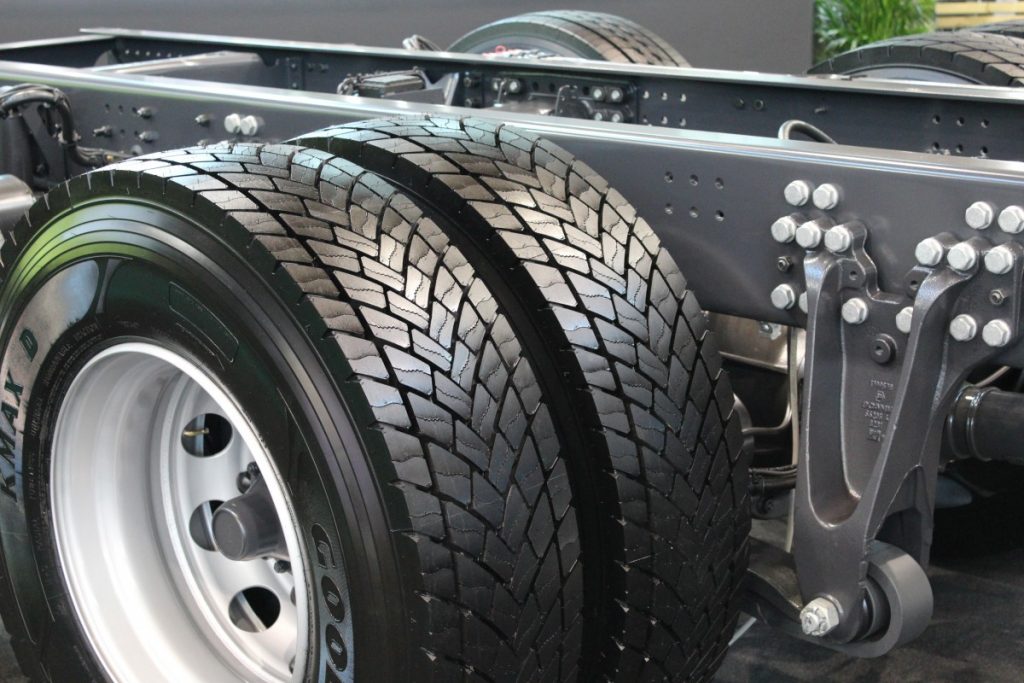Content:
– Truck tyres: particular characteristics and the significance of rolling resistance
– Trucks: axle-specific tyres
– Truck tyres: markings and indices
Specific characteristics of truck tyres and the significance of rolling resistance
A truck tyre is a high-performance component designed for professional use. The majority of truck tyres are tubeless and radial-ply, and they utilise the same technology as passenger tyres.
A truck tyre is more extensive and must specifically offer robustness, durability, and fuel-saving capacity for vehicles with a GVW (Gross Vehicle Weight Rating) of greater than 3.5 tonnes.
With each wheel rotation, the tyre deforms as it makes contact with the road, losing energy as heat. This force is known as rolling resistance, and it accounts for 20% of the forces that naturally stop a vehicle (the other forces being aerodynamic friction, mechanical friction, etc.).
Rolling resistance accounts for around 33% of the energy wasted on a truck. To put it another way, one out of every three gasoline fill-ups is dissipated through the tyres, necessitating an emphasis on “green” methods to mitigate these consequences.
Trucks: each axle has its own set of tyres
Truck tyres, unlike passenger car tyres, cannot be used on all axles, and each model is specialised to a specific place on the vehicle:
– The steering axle is the front axle, directly engaged in the vehicle’s orientation.
– The drive axle is the rear axle of a truck that transmits acceleration and is coupled to the engine. Except in the case of modified tyre models that allow two tyres to be replaced by a wider tyre, the wheels are usually twinned on this axle, giving it four wheels.
– Carrying axles are trailer axles that follow the towing truck’s direction and traction.
A model made for one axle cannot be used on a different axle. There are, however, all-position models that can be placed in any position, but the producers prominently label them as such.
Marking and indices for truck tyres

The marking on a truck tyre is identical to that on a passenger vehicle tyre, namely:
– 335 = section = tyre width in millimetres (mm).
– 55 = series = proportion (in percent) of tyre height to section height (width). As a result, it is a value that indicates the height of the sidewall or the “thickness” of the tyre.
– R denotes the tyre’s radial construction.
– 22.5 = internal diameter (in inches) = rim diameter (“).
– 91: load index corresponds to the tyre’s maximum load in kilograms.
– V: speed index indicating the highest speed at which the tyre can be driven while keeping its performance range.
The figures that correlate to each speed code are shown below.
SPEED CODES
– A speed code is a code that indicates how fast something is moving.
– Speed is measured in kilometres per hour
|
Speed code |
Speed in km/h |
|---|
|
E |
70 |
|---|---|
|
F |
80 |
|
G |
90 |
|
J |
100 |
|
K |
110 |
|
L |
120 |
|
M |
130 |
|
N |
140 |
The figures corresponding to each load index are shown in the table below.
LOAD INDICES
|
Load kg |
Index |
Load kg |
|---|---|---|
|
3 550 |
175 |
6 900 |
|
3 650 |
176 |
7 100 |
|
3 750 |
177 |
7 300 |
|
3 875 |
178 |
7 500 |
|
4 000 |
179 |
7 750 |
|
4 125 |
180 |
8 000 |
|
4 250 |
181 |
8 250 |
|
4 375 |
182 |
8 500 |
|
4 500 |
183 |
8 750 |
|
4 625 |
184 |
9 000 |
|
4 750 |
185 |
9 250 |
|
4 875 |
186 |
9 500 |
|
5 000 |
187 |
9 750 |
|
5 150 |
188 |
10 000 |
|
5 300 |
189 |
10 300 |
|
5 450 |
190 |
10 600 |
|
5 600 |
191 |
10 900 |
Visit Star Truck Tyres in the Dandenong area if you’re looking for a tyre shop, second-hand truck tyres, new truck tyres, or even inexpensive truck tyres.
Hope this helps! Don’t forget to post comments and tell us about your experiences.





4 thoughts on “How to Interpret Truck Tyres”